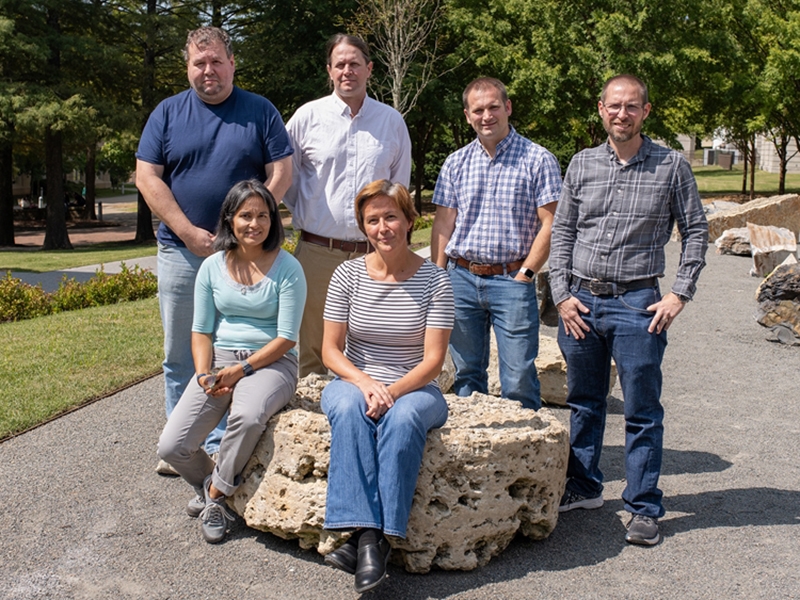
A team consisting of four NSF-funded mid-career geoscientists — Adriana Potra, Gregory Dumond, Glenn Sharman and Celina Suarez — and one early-career archeologist, John Samuelsen, has been recently awarded a major research instrumentation grant by the National Science Foundation's Division of Earth Sciences and the Instrumentation and Facilities programs.
The award of $1.1 million will enable the acquisition of a new multicollector inductively coupled plasma mass spectrometer (MC-ICP-MS) that will be managed by Erik Pollock and Barry Shaulis, senior personnel in the Trace Element and Radiogenic Isotope Lab, or TRAIL, at the U of A. The award will expand on the productive collaborations between the Geoscience Department and the Arkansas Archeological Survey.
The replacement MC-ICP-MS will have a transformative impact on research at institutional, regional and state levels.
At the institutional level, the acquisition will support the five principle investigators and four additional U of A faculty members. These activities include:
- Constraining the sources and genesis of hydrothermal lead-zinc ore deposits;
- Determining the provenance of Native American artifacts, human remains and ancient animals;
- Development of split-stream laser ablation techniques for analysis of zircon and monazite for constraining the evolution of continental crust and provenance of clastic sediments;
- Analysis of biogenic phosphate and fossil bone for constraining rates and mechanisms of fossilization and the depositional environment of bone beds;
- In situ chronology and isotopic analysis of Apollo Moon rocks; and
- Determining the source and quality of Arkansas waters.
At the regional and state levels, successful integration of the new acquisition permits the TRAIL facility to become one of fewer than 20 laser ablation split-stream facilities in the U.S. and enable new advances in this emerging field. TRAIL is a university core facility that provides mineralogic, element and heavy isotope analyses to researchers across the university, state and nation.
The new state-of-the-art MC-ICP-MS will enhance training of the next generation of multi-disciplinary scientists at the U of A. In addition, it will be used in undergraduate and graduate course work related to geochemistry, petrology and laboratory methods in archeology to enhance technical skills of students.
The acquisition of this new MC-ICP-MS extends these impactful efforts and supports the development of innovative new research programs relevant to geology, hydrology, archeology and paleobiology. These include principle investigator Potra's research on quantification of metal loads transported by streams draining lead and zinc mining districts in the southern Ozark region, which provides critical environmental and societal need for residents of Oklahoma, Arkansas and Missouri.
The new equipment supports ongoing broader impacts for Native American tribes in the Tri-State lead- and zinc-mining district. The district has had a history of unsustainable development of resources, which led to long-lasting effects on the people, including the Cherokee, Miami and Quapaw nations. The Tar Creek Superfund Site is the only tribal-led reclamation of the nation. In addition, Pb isotope analysis of human remains allows identification of their ancient human geographic origins and their cultural affiliations. In collaboration with tribes throughout the south-central U.S.A., co-PI Samuelsen's assessment of contamination and novel MC-ICP-MS technique will continue enabling the resolution of issues that are important to both tribes and researchers.
Topics
Contacts
John R. Samuelsen, science & technology administrator
Arkansas Archeological Survey
479-575-3556, jsamuel@uark.edu
Andy Albertson, director of communications
Research and Economic Development
479-575-6111, aalbert@uark.edu